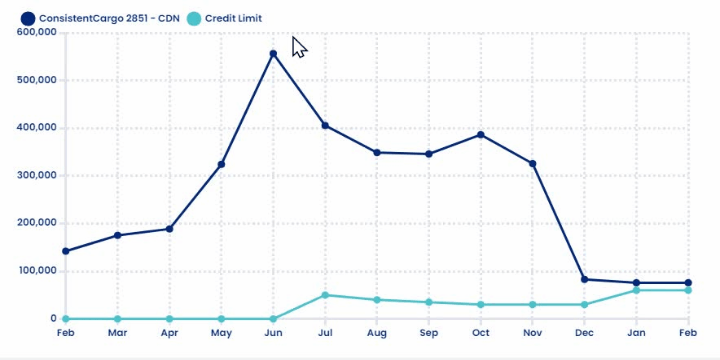In the intricate dance of financial management, accounts receivable
plays a pivotal role in sustaining a healthy cash flow for
businesses. One of the tools at the forefront of efficient accounts
receivable management is the establishment of credit limits. In this
article, we explore the significance of credit limits in navigating
financial stability and safeguarding the well-being of
businesses.
The Challenges of Unmanaged Credit:
Without defined credit limits, businesses risk encountering delayed or overdue payments. This can lead to disruptions in cash flow and impact the ability to meet immediate financial obligations.
Failing to set credit limits may expose businesses to an increased risk of bad debts. Without clear boundaries on credit extensions, there is a higher likelihood of extending credit to customers who may struggle to fulfill their payment obligations.
Establishing credit limits is a proactive measure to mitigate financial risks. By setting clear boundaries on the amount of credit extended to each customer, businesses can reduce the risk of late payments and potential bad debts.
Credit limits enable businesses to manage their cash flow more effectively. By defining the maximum amount of credit extended to customers, organizations can anticipate and plan for incoming payments, ensuring a steady and reliable cash flow.
Tailoring credit limits to individual customers allows for a more nuanced and personalized approach. Different customers may have varying creditworthiness, and setting individual credit limits ensures a fair and balanced extension of credit.
Before setting credit limits, businesses should conduct thorough credit assessments of their customers. This includes evaluating their credit history, payment patterns, and overall financial stability.
Credit limits should not be static. Regularly reviewing and, if necessary, adjusting credit limits based on changing customer dynamics, market conditions, and the financial health of the business is crucial.
K-HARP can streamline the process of setting, monitoring, and adjusting credit limits for QuickBooks Online.


In the complex landscape of financial management, setting credit limits in accounts receivable is a strategic move that contributes to stability and growth. By mitigating risks, managing cash flow, and adopting an individualized approach, businesses can navigate the challenges of accounts receivable effectively. Credit limits serve as a safeguard, ensuring that businesses can maintain financial health and thrive in the ever-changing business environment.